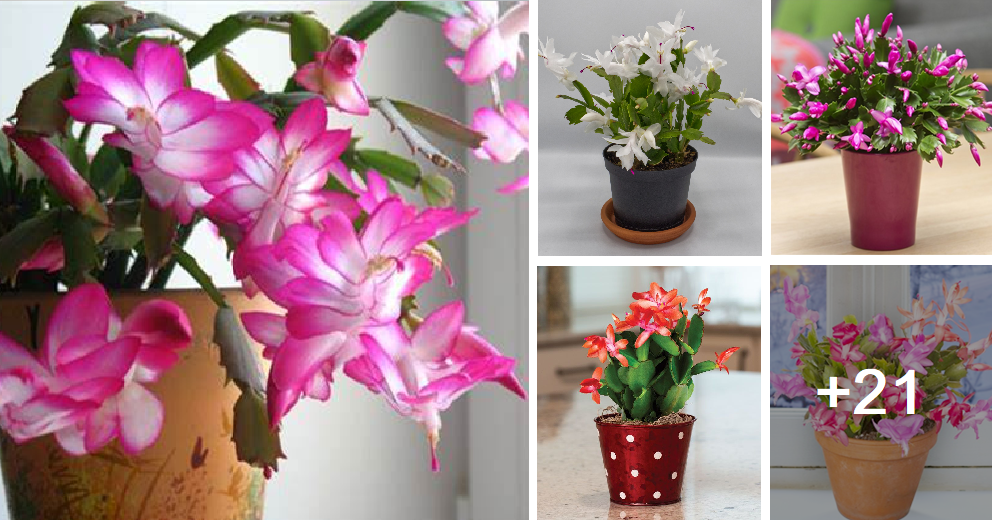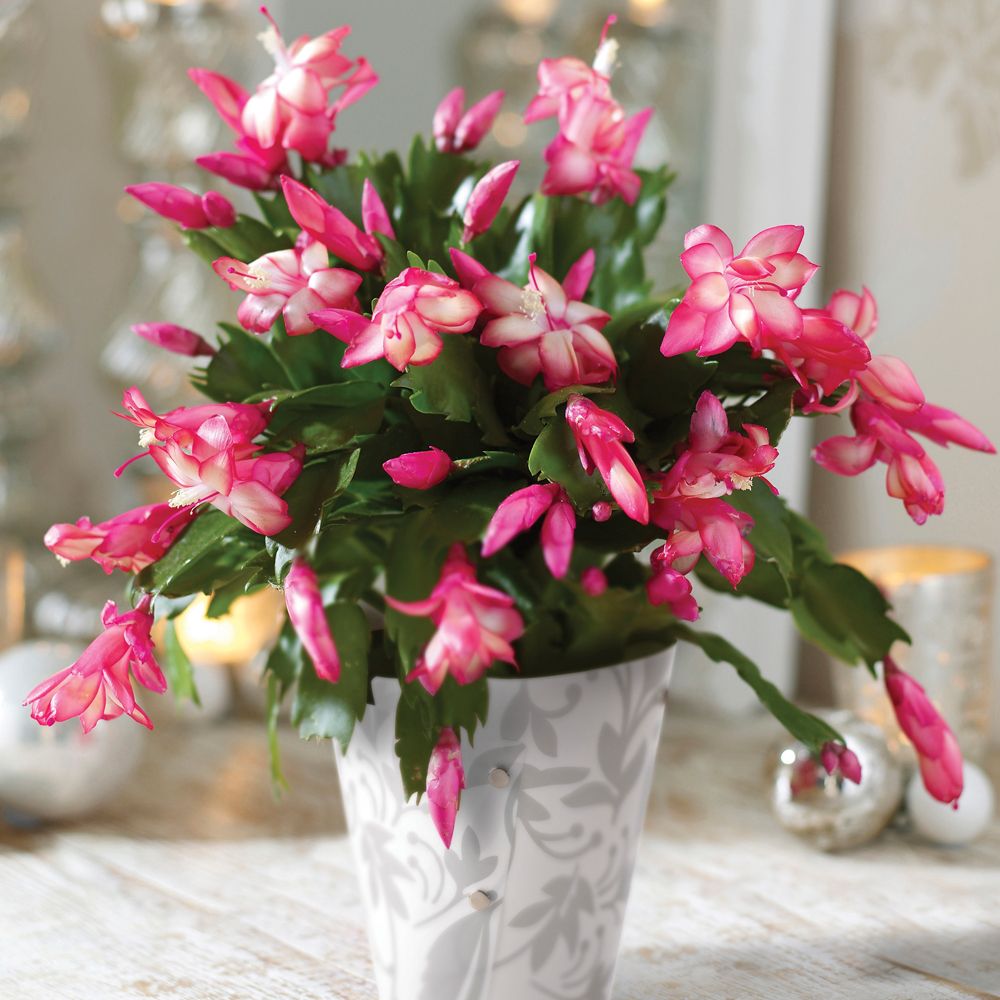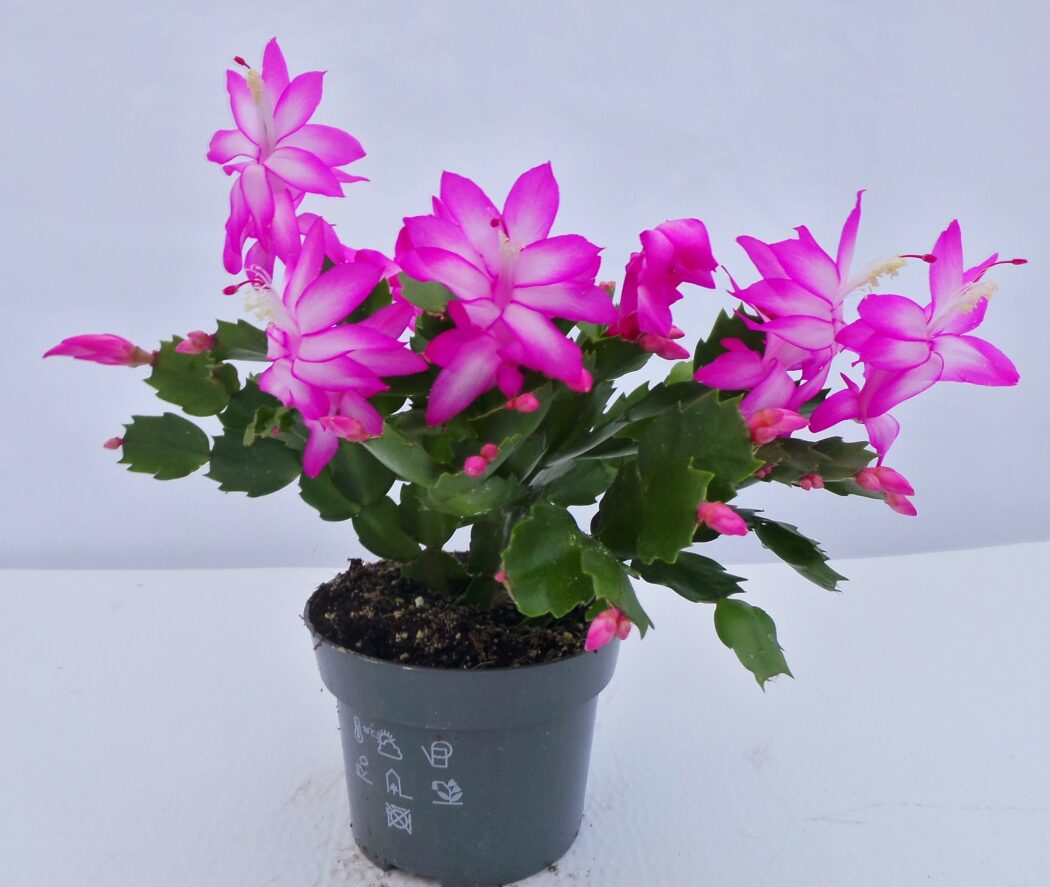
Potted Christmas cacti
When choosing a pot for a Christmas cactus, be sure to choose one that has a drainage hole in the bottom. This helps keep the soil from getting too wet.
Christmas cacti grow well in most potting mixes formulated for succulents. The important thing is that your potting soil drains well.
Where to put a Christmas cactus
Plants should be kept in bright, indirect light. An east-facing window or a bright bathroom is ideal. Too much direct sunlight can bleach the delicate leaves.
A daytime temperature of (21°C) and an evening temperature of 60-(15-18°C) is preferred.
Christmas cacti prefer a more humid environment, making a bright bathroom or kitchen a good place to keep them.
In summer, Christmas cacti can be placed in a shady spot in the garden or in an unheated veranda until the temperature drops below (10°C). Keep them out of direct sunlight outdoors.
Plan to water every two to three weeks, but only water when the top third of the soil feels dry to the touch. For example, if the plant is in 6 inches of soil, water when the top 2 inches feel dry. (Use your finger to check!)
When the soil is dry enough, soak the soil until the water runs through the pot’s drainage holes. Place a tray under the pot to catch the water. After 10-15 minutes, throw excess water into the tray so the pot doesn’t sit in water.
It is especially important to water well while the plant is blooming.
From spring to early fall, feed every two weeks with a balanced houseplant fertilizer. During the fall and winter, feed the cactus monthly to encourage successful flowering.
Prune plants in late spring to encourage branching and more flowers. Simply cut off a few sections of each stem; the plant will branch from the wound.
If you like, place the cut pieces in slightly moist potting soil – they will root easily after a few weeks and make excellent Christmas gifts!
How to make your Christmas cactus bloom
The flowering of Christmas cacti and its relatives is triggered by the cooler temperatures and longer autumn nights. The three main types of holiday cacti generally bloom according to this schedule:
Thanksgiving cacti are the earliest and longest bloomers, typically producing flowers from late fall to mid-winter.
Christmas cacti tend to bloom from early winter to mid-winter.
Easter cacti bloom from late winter to mid-spring.
If your cactus is not blooming, it may be getting too much light or too high temperatures. Here are some tips to encourage you to produce flowers!
To trigger flowering, nights must be at least 14 hours long and days between 8 and 10 hours for at least six weeks. If you have strong indoor lights that are on at night, you may need to cover your cactus or move it to an area exposed to natural light.
Flower buds are best formed when the plant is kept in temperatures between 50 and 60°F (10 and 15°C).
You can jump-start the germination process by exposing the plant to temperatures of about 45°F (7°C) for several nights in a row.
Make sure you are consistent with watering while the plant is blooming. If the plant dries out too much, it may lose its buds.
If the cactus drops its buds one winter, don’t worry: it will bloom the following year!